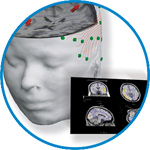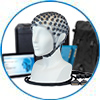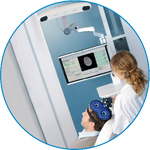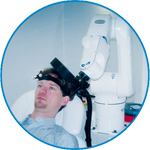- Home
- About ANT
-
Products

asa
asa is a highly flexible EEG/ERP and MEG analysis package with a variety of source reconstruction, signal analysis and MRI processing features.
.jpg)
eego mylab
The new frontier in multimodal brain research. With up to 16 kHz sampling rate, 256 EEG channels and unique software features, eego mylab gives you an unprecedented in-depth understanding of the human brain.

eego sports
eego sports offers complete freedom to collect high-density EEG data, bipolar EMG signals, and a variety of physiological sensor data, wherever and whenever required, with publish quality data in less than 15 minutes!

waveguard net
The waveguard net sets a new standard for research applications requiring high-density EEG data acquisition with quick preparation time, high flexibility, and subject comfort.

visor2
Our new and upgraded visor2 solutions integrate all the latest technologies for navigated rTMS, dual-coil navigation support, EEG-TMS recordings and pre-surgical evaluation for the highest quality in research and clinical procedures.

powerMAG ANT
The PowerMAG ANT 100 rTMS stimulator is designed for the specific needs of high-end TMS applications. Powerful high-frequency TMS as well as high precise single pulse and repetitive pulse protocols are combined in one single device.

xensor
xensor offers the solution for digitization of 3D electrode positions. xensor takes care of the whole procedure; it records, visualizes and stores positions acquired with a dedicated digitizer.

waveguard original
waveguard original is the cap solution for EEG measurements compatible with fMRI, MEG and TMS system. Use of active shielding guarantees performance in even the most demanding environments.

waveguard connect
waveguard connect EEG caps are a perfect match for hospitals and institutes aiming at reliable EEG, maximum uptime and great patient comfort! For optimal signal quality, the electrodes are made of pure, solid tin.

waveguard touch
waveguard touch is a dry electrode EEG cap. The unique Ag/AgCl coated soft polymer electrodes provide stable, research-grade EEG signals while maintaining subject comfort. The combination of these innovative dry electrodes and the industry-leading waveguard cap makes waveguard touch the best solution for dry EEG.

smartmove
smartmove allows planning of a complete TMS session ahead by defining stimulation sites based on anatomical MRI information and functional information like fMRI, PET or EEG/MEG.
Stay - References
- Support
- Events
- News
- Contact Us
You are here
Sensory gating in the human hippocampal and rhinal regions.
Sensory gating in the human hippocampal and rhinal regions.
Objective: The objective of this work was to ascertain if sensorygating can be demonstrated within the human medial temporal lobe
Methods: Eight patients with intractable epilepsy with depth electrodes implanted in the medial temporal lobe for presurgery evaluation underwent evoked response recording to auditory paired-stimuli (S1–S2). Each of the eight subjects had a diagnosis of left medial temporal lobe epilepsy (MTLE)
Results: Data from the non-focal right hippocampi revealed a large negative response on S1 (starting at about 190 ms and lasting for approximately 300 ms from stimulus onset). Rhinal region recordings revealed a positive response (starting at about 240 ms with a rapid incline, followed by a long-lasting decline). A significant attenuation of both responses to S2 stimuli was observed.
Conclusions: Data are suggestive of an involvement of the human medial temporal lobe in the processing of simple auditory information which occurs in a time frame later than the neocortical auditory evoked components. The exact role of these anatomical structures in the sensorygating process remains to be defined.
Significance: This study provides the first evidence of an activation of the rhinal cortex after simple auditory stimulation and provides new evidence that the activation of the medial temporal lobe structures occurs at a later stage than that of the neocortex.

 Read more
Read more.jpg)




